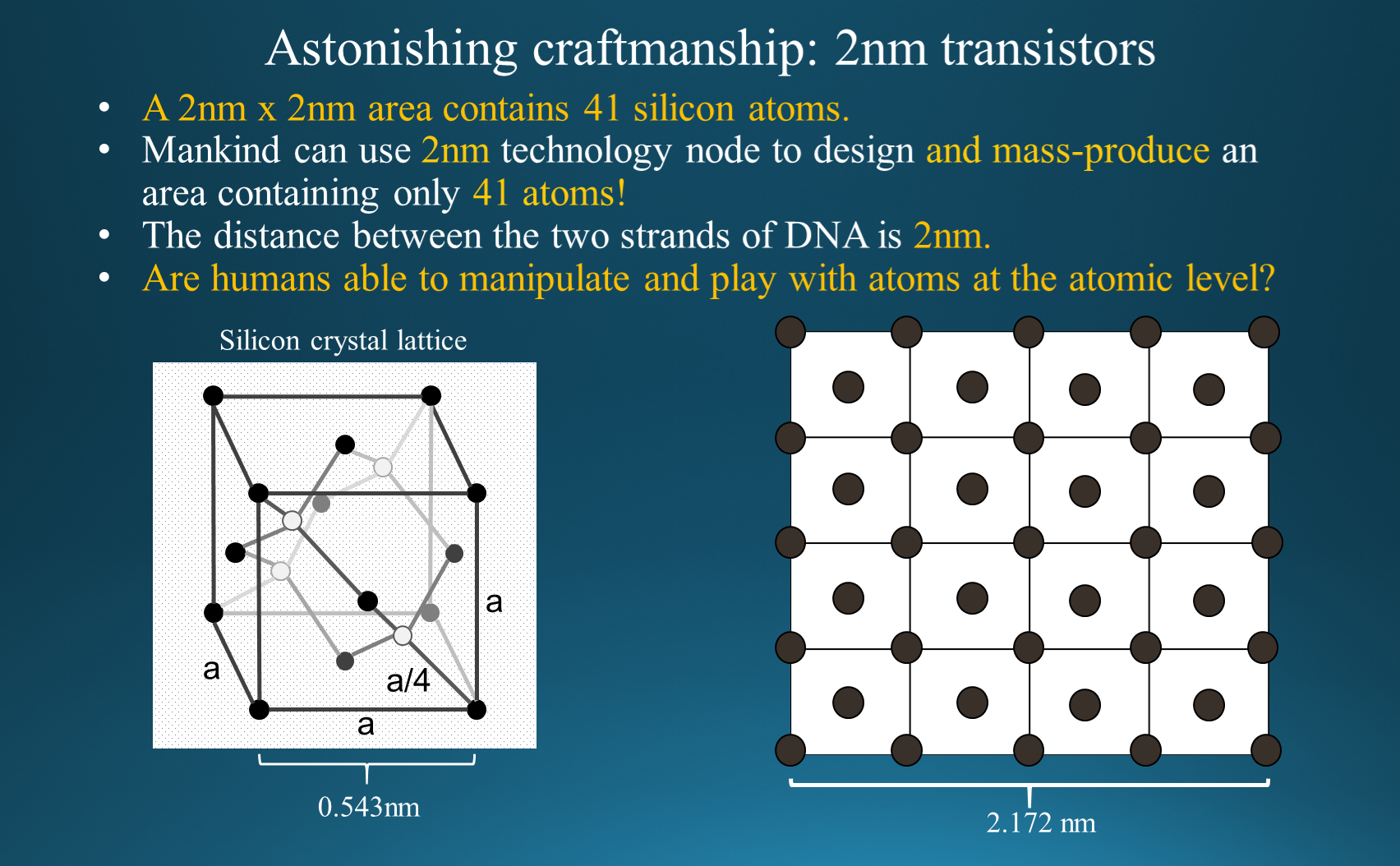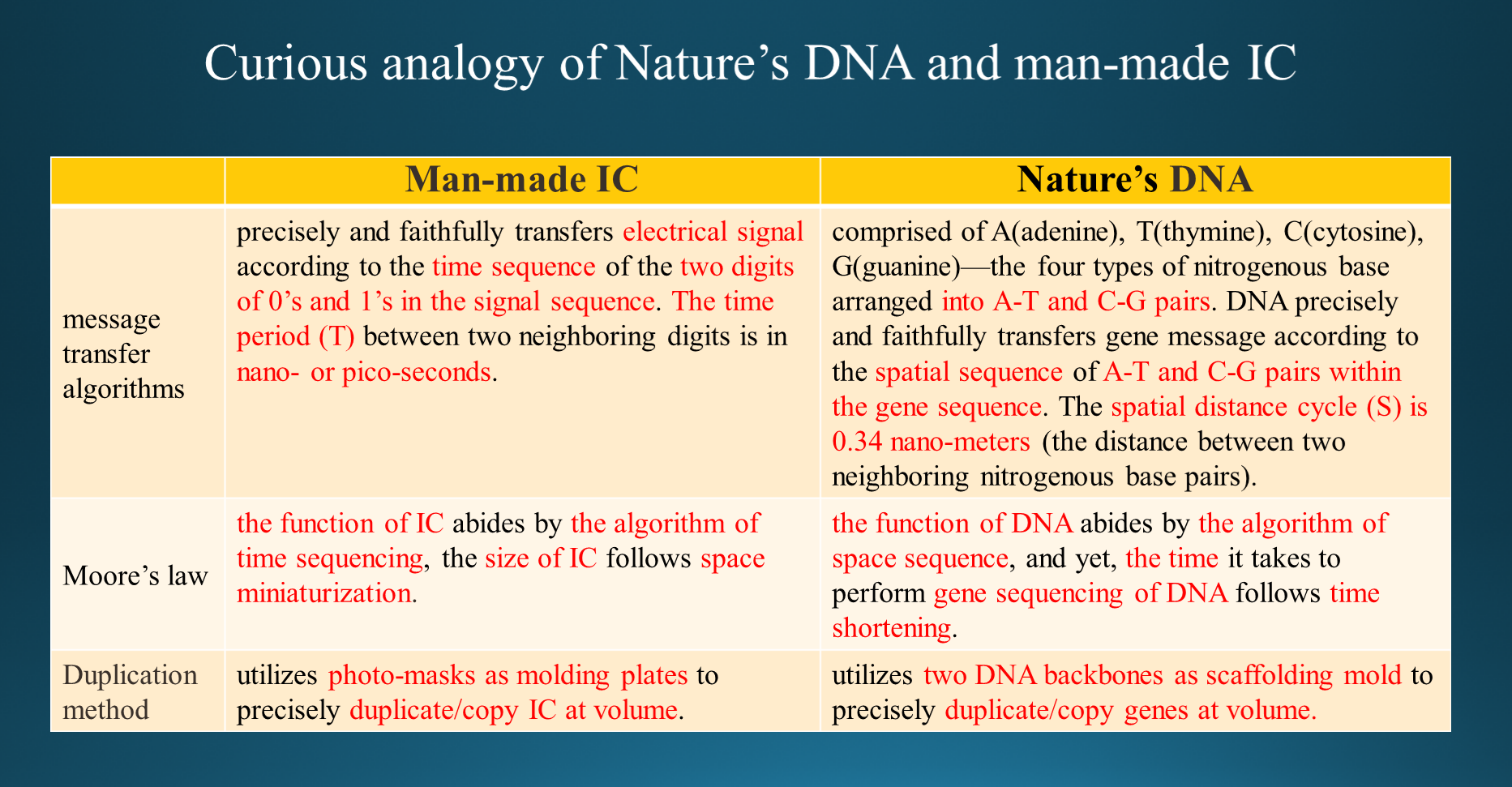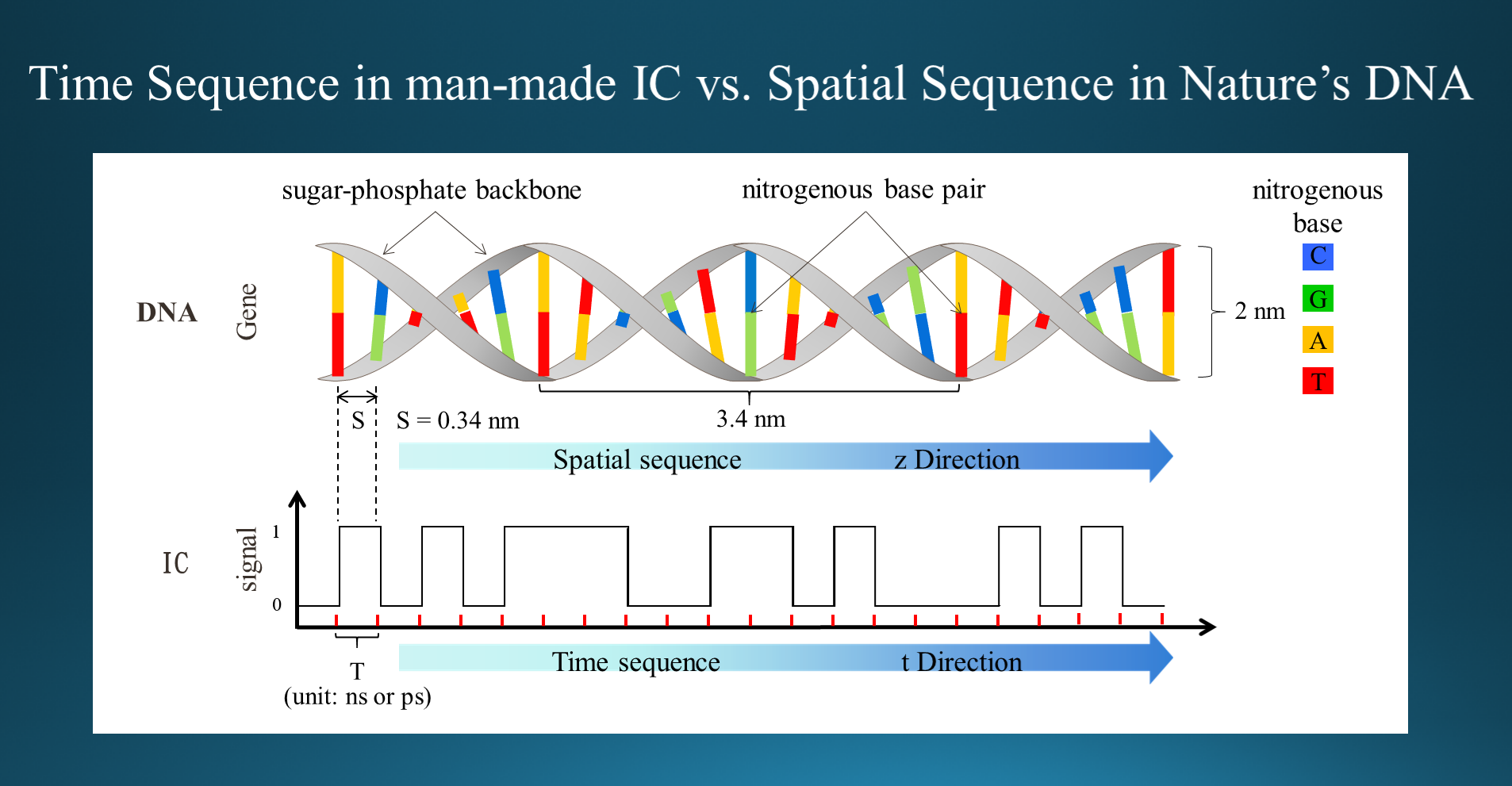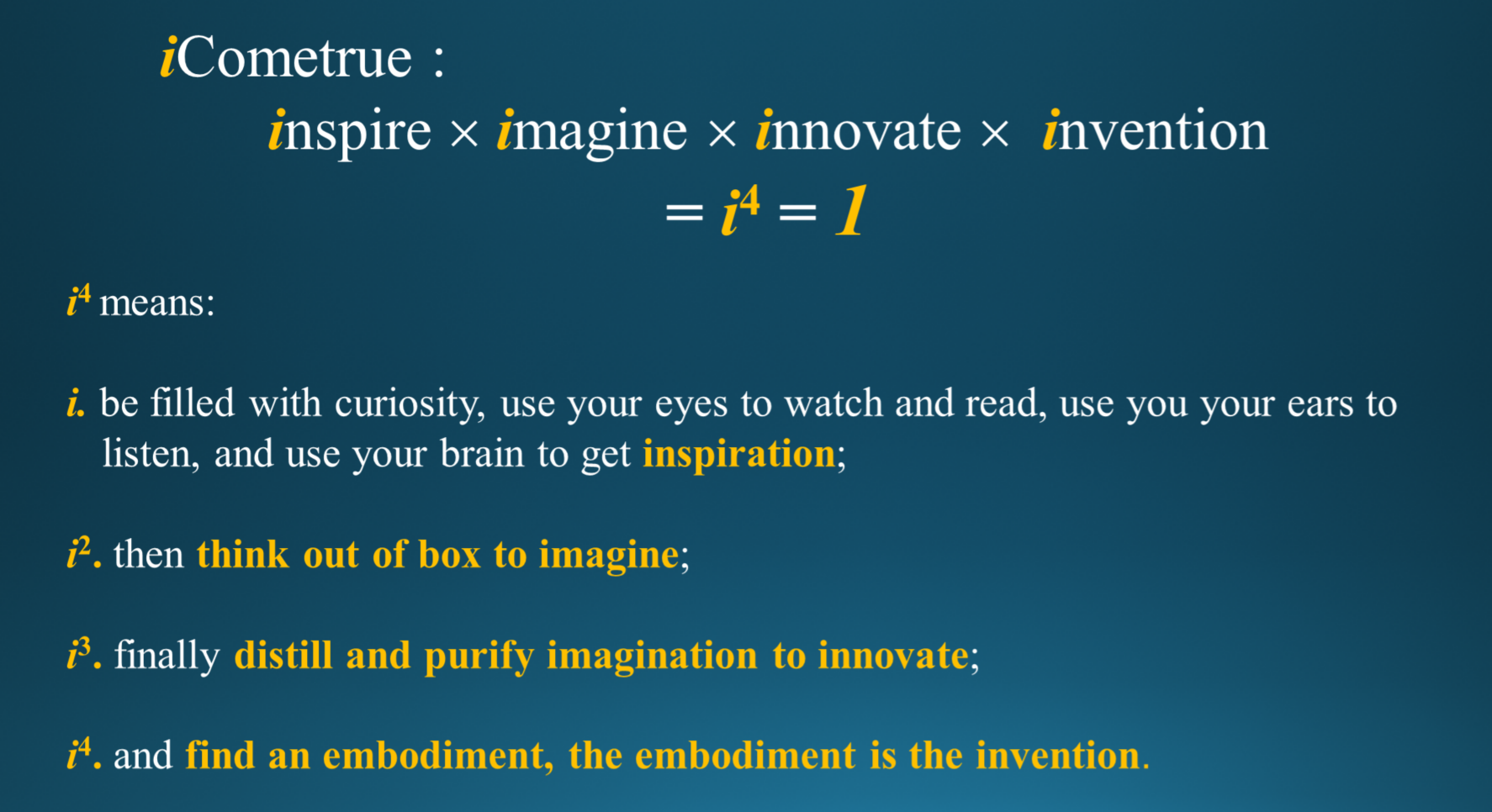If you have comments, questions or interest described in the following article, please contact us at:
Email: cometrue@icometrue.com
Lesson 5: Big numbers are beautiful: how magical power and super intelligence emerge when the number approaches infinity
In his essay “The West Lake Diary”, Xu Zhimo, a Chinese romantic poet from the early 20th century, remarks:
"Thousands of sheep in front of the turquoise hills, cuddling next to each other, forming a layer of velvety snow, it is beautiful; a skyful of stars, like thousands of sparkling eyes looking down on the land from the limitless blue sky, it is beautiful; a sea of clouds on the summit of Mount Tai, tens of thousands of cloudy peaks silently sitting in the morning light, it is beautiful; the millions of waves on the sea, wearing all manner of white caps, glimmering in the sunlight, rising and falling, it is beautiful; and tens of millions of birds resting on the “feather island” near Ireland, a blanket of feathers covering the setting sun in the west, the deafening chorus of so many birds singing simultaneously, it is beautiful; ......When the numbers are enormous, it is beautiful.
There is beauty in the enormity of numbers. When the numbers are big, they seem to follow a certain law of nature, naturally forming a special arrangement, a special tempo, a unique style, exciting our aesthetic natures, stimulating our aesthetic souls."
This is perhaps the best, most beautiful, and perfect expression of the moving feelings one experiences when struck with nature’s grandiosity and articulation of the foundation of this talk. When numbers approach infinity, it can lead to advanced intelligence and unimaginable, seemingly magical power. The human brain contains 1011 neurons, and, for comparison, a semiconductor chip now already contains 5x1010 transistors—very close to the number of neurons in a human brain. In 2015, the gravitational wave was detected and heard by the Laser Interferometer Gravitational-Wave Observatory (LIGO), confirming the theory of General Relativity proposed by Einstein over a hundred years ago. In 2016, the artificial intelligence program AlphaGo beat master players in the game Go. These astonishing events were all fueled by the incredible power created by the ever-expanding number of transistors on semiconductor chips.
With the creation of the EUV lithography machine, man can position and manipulate forty-one silicon atoms within a 2 nm x 2 nm frame. The precision of this craftmanship is astonishing—for reference, 2nm is approximately the distance between two strands of DNA backbones.

Amazingly, we can further explore this curious analogy of Nature’s DNA and man-made IC by exploring other subtle, deep similarities between the two: (1) DNA and IC utilize similar message transfer mechanisms and algorithms. DNA is comprised of A(adenine), T(thymine), C(cytosine), G(guanine)—the four types of nitrogenous bases arranged into A-T and C-G pairs. DNA precisely and faithfully transfers gene message according to the spatial sequence of A-T and C-G pairs within the gene sequence. The spatial distance cycle (S) is 0.34 nano-meters (the distance between two neighboring nitrogenous base pairs). In comparison, the IC precisely and faithfully transfers electrical signal according to the time sequence of the two digits of 0’s and 1’s in the signal sequence. The time period (T) between two neighboring digits is in nano- or pico-seconds; (2) Both the decrease in time it takes to perform gene sequencing of DNA in genomics and the decrease in the size of transistors in IC have followed Moore’s law, though the cycles of Moore’s law in gene sequencing could not be sustained for as many cycles of Moore’s law as in IC. Although the function of IC abides by the algorithm of time sequence, the size of IC follows space miniaturization. In contrast, the function of DNA abides by the algorithm of spatial sequence, and yet, the time it takes to perform gene sequencing of DNA follows time shortening. Based on this observation, I believe that space and time may play a hidden and mysterious role in both nature’s DNA and man-made IC. Could it be space and time magically acting on the biological evolved DNA and human crafted IC? Could there possibly be an insight here related to complex space and time theory in physics? Could this be a hint at the future of DNA computing or Quantum computing? The fabric of space and the nature of time in physics challenge our knowledge and imagination, and we, as human beings, may be often caught in confusion and hardly understand the true reality and beauty of space and time; (3) Finally, Nature’s DNA utilizes two DNA backbones as scaffolding mold to precisely duplicate/copy genes at volume while IC utilizes photo-masks as molding plates to precisely duplicate/copy IC at volume.


If thinking deeper, people would be shocked by a reality of the amazing power of EUV machine. The number of transistors that one EUV lithography machine can now produce in a year is almost equivalent to the number of neurons in 110 million human brains, in which the number of human brains is close to 140 million of worldwide new-born babies in 2020. This incredible potential come a number of possible futures and important considerations. An optimist might envision a future in which chips continue to improve human civilization and bring us more and more breakthroughs and astonishing contributions. Semiconductors will solve nature’s great mysteries, improve human life, civilization, and medical health. For example, the spinning speed of the Muon particle in a magnetic field was recently discovered to contradict the known laws of physics by the Fermi National Accelerator Laboratory in Chicago. With the artificial intelligence capabilities of today’s chips, we will certainly find the answers to problems like these and may potentially discover the fifth fundamental force or even unknown new fundamental particles. However, a pessimist might conversely envision a future in which chips destroy human civilization. In the fierce conflict and rivalry between the liberal democratic system and totalitarian autocratic system, elites of liberal democratic systems use algorithms to manipulate data to greedily and insatiably get what they want, while dictators of totalitarian autocratic systems violate personal privacy, creating fraud to brain-wash and control the thoughts and actions of their citizens. When man loses the freedom to think and move freely, they are no longer human and will be no different from livestock—this is the greatest worry and source of unease for conscientious engineers who have spent their lifetimes working in semiconductor industry and care deeply about humanity!
To avoid the possible abuse of advanced technology that could result in great danger and the potential for mass destruction, young scientists and engineers should establish and learn to abide by the principles of Engineering Ethics as early as possible. When a scientist and engineer is instilled with engineering ethics, they will be alert to the many things they can accomplish to improve the standards of human civilization while avoiding the path to the destruction and diminishing of human civilization. For example, if we were to challenge Apple’s commitment to protecting the environment, perhaps we could consider the use of Logic Drives to allow users to reconfigure hardware circuits with software in the iPhone they purchased. Users could continue to upgrade their iPhones and add new functions without constantly purchasing entirely new mobile phones. The re-use of chips could allow users to purchase a new iPhone once every five to seven years, reducing the waste of water, electricity, and materials for producing chips and batteries as well as the environmental costs to waste disposal. If the Logic Drive promoted by iCometrue were to become a reality, it would provide talented entrepreneurs with limited resources opportunities to participate in designing applications of 10 nm or more advanced semiconductor processes, accelerating the development of semiconductor technology. At the same time, reusing chips aligns with the social responsibilities of protecting the earth and being environmentally-friendly. Looking at another example, Harvard University recently established its Enterprise Research Campus (ERC) at its new Allston campus, providing occupancy for startup companies, especially encouraging professors, students, and alumni to start companies to find solutions for climate change or develop products and implementations relevant to engineering ethics.
To establish the discipline of engineering ethics in young scientist and engineers, the Harvard University School of Engineering and Harvard Law School established a joint professorship with the title of Professor of Engineering and Law in 2013. The Harvard University School of Engineering also pioneered the Embedded Ethics for Computer Science (EthiCS) initiative in 2018 and held its first worldwide “Conference on Ethics of Engineering” in January 2019. It is now planning to soon incorporate and add AI and Responsibility (AIR) research and courses. I applaud Harvard for the steps it has taken in this regard and urge all universities to establish such disciplines at their schools as well.
Conclusion:
In the name “iCometrue”, the “i” represents four guiding principles: inspire, imagine, innovate, and invent. Putting iCometrue’s four “i”s together into an equation—inspire x imagine x innovate x invent = i4 = 1. The number 1 reminds me of the saying in Buddhism that “one is all, and all is one”. Through this journey, I have led you through space and time, from the 1027 m universe to the 10-9 m semiconductor of space and the 4.3×1017 second-old (13.8 billion years) universe to the 10-11 second semiconductor heartbeat of time. While vast in scope, this can all be appreciated within one’s heart.
Lastly, I would like to encourage young scientists and engineers to join me in striving for curiosity, imagination and values. Allow yourself to: (i) be filled with curiosity and use your eyes to watch and read, your ears to listen, and your brain to receive inspiration; (i2) think outside of box to visualize and imagine; (i3) distill and bring your imagination into focus to innovate; and (i4) finally, find an embodiment that will become your invention

But most important of all is to establish good values. Harvard University always believed that the goal of education is to establish good, ethical values and not just to gain knowledge. After students graduate, whether they end up becoming presidents, members of Congress, public servants, soldiers, teachers, lawyers, doctors, accountants, engineers, entrepreneurs, or businesspeople, they should make decisions based on their ethical values and religious faith instead of just using the knowledge they learned in school when facing life’s most crucial moments. There will surely be many challenges ahead and problems yet to solve, and I hope that this has inspired you to tackle these with a curious mind, imaginative spirit, and a value-driven purpose.

(This article was translated from the article (in Chinese) published in “DIGITIMES” on November 19th, 2021, while with some revisions.)
Link of “DIGITIMES”: Lesson 5